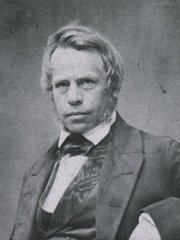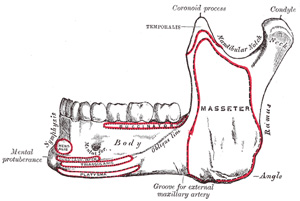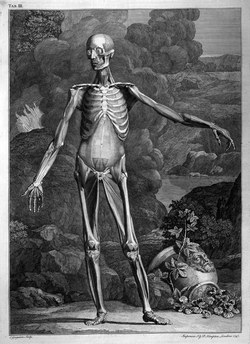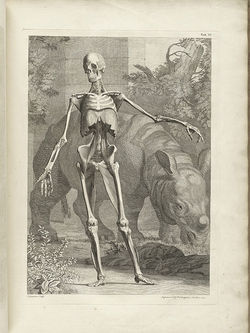
Medical Terminology Daily (MTD) is a blog sponsored by Clinical Anatomy Associates, Inc. as a service to the medical community. We post anatomical, medical or surgical terms, their meaning and usage, as well as biographical notes on anatomists, surgeons, and researchers through the ages. Be warned that some of the images used depict human anatomical specimens.
You are welcome to submit questions and suggestions using our "Contact Us" form. The information on this blog follows the terms on our "Privacy and Security Statement" and cannot be construed as medical guidance or instructions for treatment.
We have 1685 guests online

Georg Eduard Von Rindfleisch
(1836 – 1908)
German pathologist and histologist of Bavarian nobility ancestry. Rindfleisch studied medicine in Würzburg, Berlin, and Heidelberg, earning his MD in 1859 with the thesis “De Vasorum Genesi” (on the generation of vessels) under the tutelage of Rudolf Virchow (1821 - 1902). He then continued as a assistant to Virchow in a newly founded institute in Berlin. He then moved to Breslau in 1861 as an assistant to Rudolf Heidenhain (1834–1897), becoming a professor of pathological anatomy. In 1865 he became full professor in Bonn and in 1874 in Würzburg, where a new pathological institute was built according to his design (completed in 1878), where he worked until his retirement in 1906.
He was the first to describe the inflammatory background of multiple sclerosis in 1863, when he noted that demyelinated lesions have in their center small vessels that are surrounded by a leukocyte inflammatory infiltrate.
After extensive investigations, he suspected an infectious origin of tuberculosis - even before Robert Koch's detection of the tuberculosis bacillus in 1892. Rindfleisch 's special achievement is the description of the morphologically conspicuous macrophages in typhoid inflammation. His distinction between myocardial infarction and myocarditis in 1890 is also of lasting importance.
Associated eponyms
"Rindfleisch's folds": Usually a single semilunar fold of the serous surface of the pericardium around the origin of the aorta. Also known as the plica semilunaris aortæ.
"Rindfleisch's cells": Historical (and obsolete) name for eosinophilic leukocytes.
Personal note: G. Rindfleisch’s book “Traité D' Histologie Pathologique” 2nd edition (1873) is now part of my library. This book was translated from German to French by Dr. Frédéric Gross (1844-1927) , Associate Professor of the Medicine Faculty in Nancy, France. The book is dedicated to Dr. Theodore Billroth (1829-1894), an important surgeon whose pioneering work on subtotal gastrectomies paved the way for today’s robotic bariatric surgery. Dr. Miranda.
Sources:
1. "Stedmans Medical Eponyms" Forbis, P.; Bartolucci, SL; 1998 Williams and Wilkins
2. "Rindfleisch, Georg Eduard von (bayerischer Adel?)" Deutsche Biographie
3. "The pathology of multiple sclerosis and its evolution" Lassmann H. (1999) Philos Trans R Soc Lond B Biol Sci. 354 (1390): 1635–40.
4. “Traité D' Histologie Pathologique” G.E.
Rindfleisch 2nd Ed (1873) Ballieres et Fils. Paris, Translated by F Gross
"Clinical Anatomy Associates, Inc., and the contributors of "Medical Terminology Daily" wish to thank all individuals who donate their bodies and tissues for the advancement of education and research”.
Click here for more information
- Details
The word [mandible] has a Latin origin in the word [mandibula] which itself arises from the Latin word [mandere] meaning "to chew", and refers to the bony lower jaw (see accompanying image).
This term has been in use for a short time. Originally the term "maxilla" was used both the upper and lower jaw, naming one the "upper maxilla" and the other the "lower maxilla". Today the bony portion of the upper jaw is simply named "maxilla" while the bony portion of the lower jaw is called the "mandible".
Note: This article only deals with the etymology of the word "mandible". The anatomical description of the mandibular bone will be presented in a later article.
Source:
1. "Anatomy of the Human Body" Henry Gray 1918. Philadelphia: Lea & Febiger
Original image public domain by Henry VanDyke Carter, MD.
- Details
This article is part of the series "A Moment in History" where we honor those who have contributed to the growth of medical knowledge in the areas of anatomy, medicine, surgery, and medical research.

Friedrich Gustav Jakob Henle
Friedrich Gustav Jakob Henle (1809 -1885) German physician, anatomist, histologist, and physiologist. Born in the city F?rth, Henle entered the University of Bonn and studied anatomy with Johannes Muller (1801 – 1859), a professor of anatomy and histology. Henle dedicated his efforts to scientific research, and became the managing editor of the journal “Archives of Anatomy, Physiology, and Scientific Medicine” founded by Muller.
Henle’s career in Berlin suffered after he was arrested for 40 days in jail, because of his past membership in a radical liberal and nationalistic student fraternity, the Burschenschaften. He transferred from Berlin to Zürich where he founded the School of Rational Medicine.
Among his publications, the “Allgemeine Anatomie “(1841) is considered the first treatise on microscopic histology. Also, his book “Handbuch der systematischen Anatomie des Menschen” (Handbook of Human Systematic Anatomy) is a great anatomy book with good illustrations.
Henle moved from Zürich to Heidelberg, and from there to Gôttingen, where he accepted the position of Professor of Anatomy. He stayed at Gôttingen until his death in 1885.
Henle’s many remembered contributions are mostly in the area of histology. His name is found in many eponyms. The eponym most associated with his name is “Henle’s loop”, part of the tubular component of a nephron.
- Crypts of Henle: Microscopic pockets located in the conjunctiva of the eye
- Henle's fissure: Fibrous tissue between the cardiac muscle fibers.
- Henle's ampulla: Ampulla of the uterine (Fallopian) tube
- Henle's layer: Outer layer of cells of root sheath of a hair follicle.
- Henle's ligament (tendon): Tendon of the transversus abdominis muscle.
- Henle's membrane: The layer forming the inner boundary of the choroid of the eye
Sources:
1. "The Origin of Medical Terms" Skinner, HA 1970 Hafner Publishing Co.
2. “The Man Behind the Eponym Jacob Henle: Henle’s Layer of the Internal Root Sheath” Steffen C. Am J Dermatopath (2001) 23(6): 549–551
3. “The life of Jacob Henle” Robinson A Medical Life Co. 1921.
Original image in the public domain. Courtesy of Wikipedia.
- Details
These two terms are opposite, yet they need to be reviewed together. The word [antegrade] is Latin and means "to go before" or in a variation of the term, [anterograde] meaning "to go anterior or moving forward". The word [retrograde] is also Latin and means "to go or move behind (or posterior)". Based on their etymology, these words are of no use and confusing.
Now, if we use these words in the context of "proximal and distal" then the story changes. Based on our working definition of proximal and distal, the definition would be as follows:
Antegrade: Moving or in a relationship of proximal to distal. In the case of a hollow organ containing a moving fluid, it would mean "going with the flow"
Retrograde: Moving or in a relationship of distal to proximal. In the case of a hollow organ containing a moving fluid, it would mean "going against the flow"
The confusion caused by the lack of proper definition can be illustrated by this Letter to the Editor, published in The American Journal of Sports Medicine.
- Details
The prefix [-iso-] originates from the Greek [ίσος] meaning "equal". In medical terminology it is used to mean "same". Applications of this prefix include:
- Isometric: Same length. An isometric muscular contraction occurs when the muscle contracts, but the length of the muscle is the same, it does not change
- Isotonic: Equal or same tension. Refers to solutions that have the same osmotic pressure
- Isomorphous: Same shape or form
- Isosceles: Equal legs. An isosceles triangle is formed by three "legs" that have the same length
Note: The links to Google Translate in these articles include an icon that will allow you to hear the Greek or Latin pronunciation of the word.
- Details
The word [cingulum] is Latin and means "belt" or "girdle". The term was also used by Roman soldiers to denote a sword belt. The short sword of the Romans was called a "gladius" and this was the earlier name for the sternum. The plural Latin form for cingulum is "cingula".
The adjectival form for this word is [cingulate] and means "belted", "girdled", or "shaped like a belt"
In human anatomy the term [cingulum] or cingulate gyrus is used to describe a brain gyrus found deep in the medial aspect of the brain hemisphere, hugging the corpus callosum like a girdle. The cingulate gyrus (in green in the accompanying image) is part of the limbic system.
Interesting side notes: The Latin word cingulum evolved into the Spanish "cincha" used to refer to a strong leather belt, while in English it evolved into "cinch"... so when you are in "a cinch" you are basically "tied up" or "in a girdle". Also, the Greek equivalent term for cingulum is zoster, which explains why the pathology is called "herpes zoster", as the presentation of the pathology is in a tight, belt-like abdominothoracic rash.
- Details
This article is part of the series "A Moment in History" where we honor those who have contributed to the growth of medical knowledge in the areas of anatomy, medicine, surgery, and medical research.

Bernhard Siegfried Albinus
Bernhard Siegfried Albinus (1697-1770). German-Dutch physician, surgeon, and anatomist, Albinus was born in Frankfurt an der Oder, but lived most of his life in Leyden, in Holland, his adopted country. His real name was Bernhard Siegfried Weiss, which means “white” in German, the Latin version of which is “albus”, from where derives his Latinized name “Albinus”.
His father was also a physician, Bernard (or Bernhard) Weiss (1653 – 1721). He also took the last name Albinus, which makes following their history and genealogy a bit difficult.
Albinus moved to Leyden (Leiden) when he was only five years old, excelling at his studies and entering the University of Leyden at 12. He later moved to Paris, France to continue his studies on anatomy and surgery. He received his medical degree in 1719.
He began work at the University of Leyden as a Professor of Anatomy and Surgery, where he continued working until his death in 1770. He is considered one the most well-known anatomists of the 18th century.
Because of his work with his colleague Herman Boerhaave (1668-1738), Albinus came in contact with Jan Wandelaar (1690-1759) an artist and engraver. It was this collaboration and the art of Jan Wandelaar which have made Albinus’ books and illustration famous. Albinus was criticized for the luscious, detailed, and sometimes strange backgrounds of his anatomical images, yet he defended Jan Wandelaar and his artistic expression. Albinus and Jan Wandelaar were dedicated to the faithful reproduction of anatomy in their publications, developing a grid system to reduce errors in production and printing.
During his tenure, Albinus was twice appointed Rector of the University and President of the College of Surgeons of Leyden. During this time, he became aware of the discovery of the copper plates created by Eustachius’ and lost for over a hundred years. In 1744 he published the plates in the book “Explanation of the Anatomical Tables of Eustachius “with his comments, stressing the fact that these images were better than those of Vesalius, published in 1543. This is no surprise, as Vesalius’ images were woodcuts, done before the technique of printing with copper plates became popular.
Although not well-known, Albinus’ name is eponymically attached to the risorius and scalenus minimus muscles. His famous publications include “Historia musculorum hominis” in 1734), “Icones ossium foetus humani” in 1737, “Tabulæ sceleti et musculorum corporis humani” in 1749, etc.
Some of Albinus and Jan Wandelaar images can be seen here. Click on the image to see a larger depiction:
Sources:
1. "Bernard Siegfried Albinus (1697-1770), German-Dutch anatomist" JAMA (1966), 196 (10): 910
2.“Bartholomeo Eustachio – The Third Man: Eustachius Published By Albinus” Fahrer, M. Ann Anat 187 (2005) 555—573
3. “Attic perfection in anatomy: Bernhard Siegfried Albinus (1697–1770) and Samuel Thomas Soemmerring (1755–1830)” Hildebrand, R. Ann Anat 187 (2005) 555—573
4. “Two Conceptions of the Human Form: Bernard Siegfried Albinus and Andreas Vesalius” Elkins, J. Artibus et Historiae, 7:14 (1986) 91-106
5. “Bartolomeo Eustachio: His Influence on Albinus and the Anatomical Models at La Specola, Florence” Hilloowala, R. J Hist Med All Sci (1986); 41 (4): 442 -462
Portrait and all other images in this article are in the public domain. Courtesy of Wikipedia. The links to read the books online courtesy of Archive.org.







